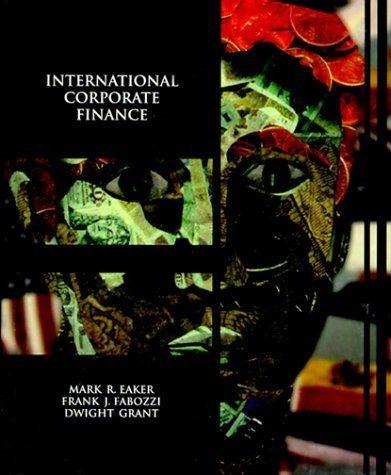
Anderson plc is considering investing in a major project requiring an investment of 900,000 in new machinery at the start of the project and E150,000 in inventory. You are given the following additional data about the project: The site to be used for the project was acquired by Anderson about 10 years ago for 450,000. A local valuation expert has valued the site currently at 1,500,000, and Anderson ple conservatively expects the value to be the same at the end of the project if not used for this project, the site would immediately be sold. Preparatory work costing 65,000 has already been done. Annual sales revenue from the project (in 00D) are likely to be as follows: Year Sales 1 900 2 1000 3 1500 4 1300 5 900 6 480 Variable costs will be 30% of sales in each year. Fixed costs will be 190,000 per year, excluding depreciation. Existing Head Office overheads of 30,000 per year will be allocated to the project. The machinery will be scrapped at the end of year 6 at a disposal cost of 41,000 This amount can be deducted from the profit for the year for tax purposes. The inventory investment will be recovered at the end of the project. Corporate tax of 20% is charged on each year's profits, payable in the year the profits are made. Taxable profits (t.e. the amount to be multiplied by 20% each year to calculate the tax cash flow) are reduced by 150,000 in each of years 1 to 6 to reflect the expenditure on the machinery. There will be a positive tax cash flow if the company makes a loss in a particular year. Neither the site nor the inventory are relevant for tax purposes. Page 4 of 7 20% of the company's financing is debt at a cost of 6%, and the remainder is equity at a cost of 11%. This project will be financed by debt. Work in 2000, rounding numbers where necessary to the nearest whole 2000 NB Discount tables are provided at the end of the exam paper. Required: (1) Set out and sum the relevant cash flows, year by year. (13 marks) (6) Calculate Anderson's Weighted Average Cost of Capital Anderson plc is considering investing in a major project requiring an investment of 900,000 in new machinery at the start of the project and E150,000 in inventory. You are given the following additional data about the project: The site to be used for the project was acquired by Anderson about 10 years ago for 450,000. A local valuation expert has valued the site currently at 1,500,000, and Anderson ple conservatively expects the value to be the same at the end of the project if not used for this project, the site would immediately be sold. Preparatory work costing 65,000 has already been done. Annual sales revenue from the project (in 00D) are likely to be as follows: Year Sales 1 900 2 1000 3 1500 4 1300 5 900 6 480 Variable costs will be 30% of sales in each year. Fixed costs will be 190,000 per year, excluding depreciation. Existing Head Office overheads of 30,000 per year will be allocated to the project. The machinery will be scrapped at the end of year 6 at a disposal cost of 41,000 This amount can be deducted from the profit for the year for tax purposes. The inventory investment will be recovered at the end of the project. Corporate tax of 20% is charged on each year's profits, payable in the year the profits are made. Taxable profits (t.e. the amount to be multiplied by 20% each year to calculate the tax cash flow) are reduced by 150,000 in each of years 1 to 6 to reflect the expenditure on the machinery. There will be a positive tax cash flow if the company makes a loss in a particular year. Neither the site nor the inventory are relevant for tax purposes. Page 4 of 7 20% of the company's financing is debt at a cost of 6%, and the remainder is equity at a cost of 11%. This project will be financed by debt. Work in 2000, rounding numbers where necessary to the nearest whole 2000 NB Discount tables are provided at the end of the exam paper. Required: (1) Set out and sum the relevant cash flows, year by year. (13 marks) (6) Calculate Anderson's Weighted Average Cost of Capital







